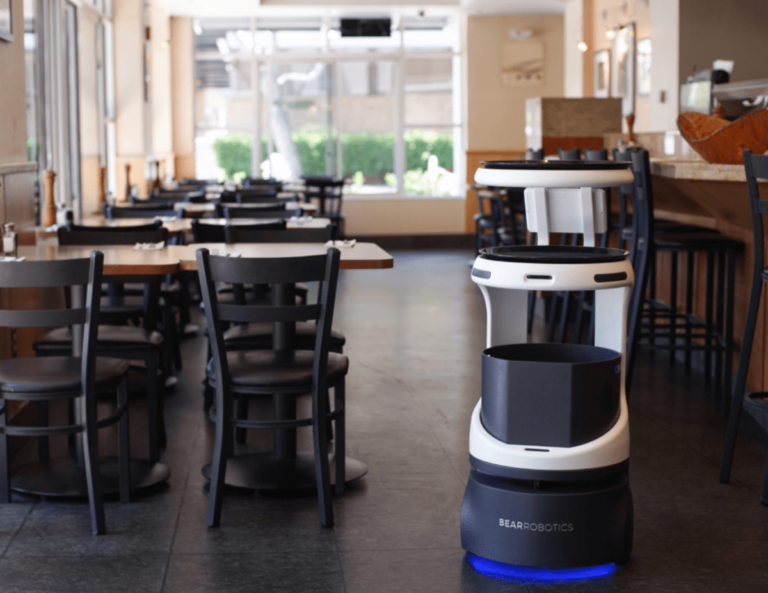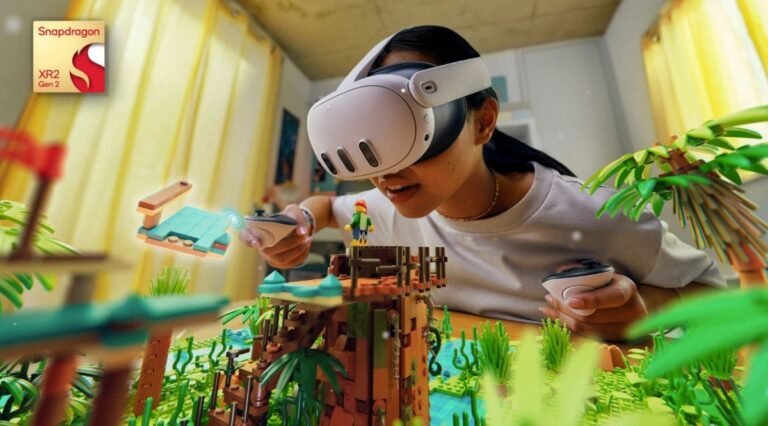
LG Electronics may no longer be a household name in smartphones, but it still sees a big future in gadgets like robots.
Today, the company confirmed a $60 million investment in Bear Robotics, the California startup that makes artificial intelligence-powered server robots for restaurants and other venues — autonomous tray towers on wheels that are meant to replace waiters.
With the investment, LG Electronics becomes Bear’s largest shareholder.
We’ve contacted Bear and LG for further comment.
The Korean electronics company has been researching and developing software and hardware in robotics.

In May 2019, Ultrahaptics and Leap Motion became Ultraleap (not to be confused with Magic Leap, which operates in the same space).
“I think it’s a long-term vision for XR,” Carter said of the deal.
Founded by a pair of University of Bristol students three years after Leap Motion, Ultrahaptics harnesses ultrasound waves to create tactile feedback.
Much like the earlier Leap Motion product, it would be possible to mount a device to the front of the visor, but directionality is important.
The Leap Motion tech determines your hands’ orientation in space, while haptics provide tactile feedback when you come into contact with the virtual object.

Zuckerberg reportedly met Samsung’s executives, including Samsung executive chairman Jay Y. Lee, Wednesday night to discuss potential collaborations around AI chips, semiconductors, and extended reality.
Nvidia continues to dominate the global market for AI chips, leaving a big opportunity for countries that have traditionally been strong in processors or reignite their innovation instincts.
To that end, the social media giant has been ramping up its efforts to secure AI chips, and has been working on its own in-house AI chip, Artemis, for its data centers.
Big tech companies like Microsoft, OpenAI, Amazon, and Google have equally been scrambling for AI chips to support their AI ambitions.
Just yesterday, Zuckerberg met LG Electronics CEO William Cho in Seoul during his tour of Asia.

Just ahead of CES, Qualcomm today announced the next generation of its Snapdragon XR platform, the aptly named XR2+ Gen 2.
These include the Snapdragon AR chips, which, for example, power the Meta/Ray-Ban smart glasses.
The line-up is a bit complicated, with the AR1 Gen 1 meant for smart glasses without a screen, the AR2 Gen 1 chips for AR-enabled smart glasses, as well as the XR1 and XR2 chips.
The XR2+ Gen 2 is the new flagship of the series, besting the previously-released non-plus XR2 Gen 2, which “only” provided a 3k resolution.
“Snapdragon XR2+ Gen 2 unlocks 4.3K resolution which will take XR productivity and entertainment to the next level by bringing spectacularly clear visuals to use cases such as room-scale screens, life-size overlays and virtual desktops,” said Hugo Swart, vice president and general manager of XR at Qualcomm.







